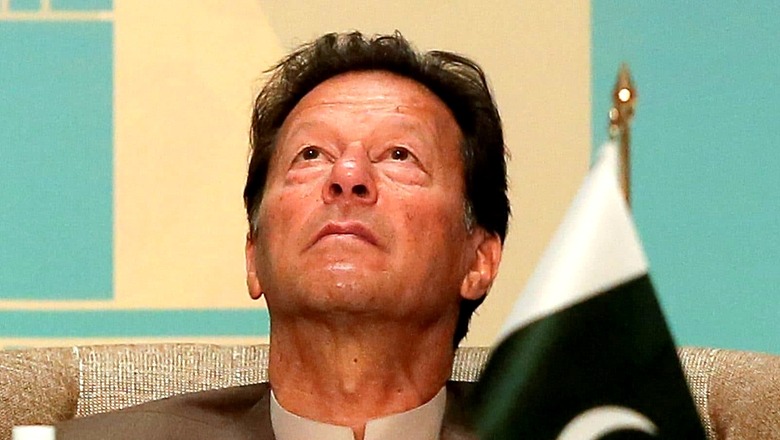
views
On July 2, 1999, some two months into the limited war being fought between India and Pakistan on the icy heights in the Kargil sector, a meeting of the Defence Committee of the Cabinet (DCC) was called in Islamabad. By this time, the tide of the war had shifted in India’s favour. The Pakistan Army was losing ground, losing men, and losing face. It needed a face-saving exit because the war was proving economically ruinous for Pakistan’s tottering economy. Senior Pakistani officials informed the DCC that they needed to get out of the conflict because the Pakistan Armed Forces could not sustain even a limited conflict beyond two weeks. A day after the DCC met, Nawaz Sharif left for Washington where, after a meeting with US President Bill Clinton, he announced withdrawal of Pakistani forces from Kargil.
At the time of the Kargil conflict, Pakistan was still struggling to recover from the near-economic meltdown that followed the nuclear tests of 1998. Its foreign exchange reserves (almost all of it made up of borrowed money) were just over $1 billion. Pakistan was negotiating debt relief from the G-8 and was already in an IMF programme. There was a real danger that both these economic lifelines would be jeopardised because of Pakistan Army’s adventurism in Kargil. The G-8 had already issued a strongly worded statement against Pakistani actions in Kargil. None of Pakistan’s traditional benefactors and supporters—the US, China and Saudi Arabia—were ready to condone, much less fund Pakistan’s adventurism. Wars being terribly expensive business cannot be fought on an empty treasury, and certainly not with a begging bowl. Even proxy wars have serious economic consequences. They might seem to be low cost options, but aren’t. For evidence, look no further than Pakistan, which has lost enormously because of its use of terrorism as an instrument of state policy.
Pakistan’s Economic Mess
In India, one of the pet subjects for brainstorming in seminars and conferences is the ‘fault lines of Pakistan’. But one of the least discussed fault lines is the vulnerability of Pakistan in the economic domain. The issue isn’t so much about the perpetual economic crisis in Pakistan leading to a collapse of the state; it is about how a weak and vulnerable economy limits the potential of Pakistan to create trouble for India, and rest of the world. There are any number of countries—Venezuela and Zimbabwe to name just two—that have an economy which is in a meltdown state. But the state and the country continue to exist. So too will Pakistan. But an economically weak Pakistan with an exploding population (no pun intended) and a financially unsustainable state structure will be so mired in myriad crises that it will be forced to douse the fires within rather than focus on lighting fires outside its borders.
ALSO READ | Pakistan Power Play: Imran Innings Coming to a Close but Nawaz Will Not Get to Bat
Many analysts, both in the West and in India, tend to take a rather conventional view that a collapsing Pakistani economy will make Pakistan a more dangerous state. The ‘too dangerous to fail’ logic—a nuclear weapons armed country with unhinged Islamists running around everywhere—works quite well for Pakistan because it facilitates perpetual bailouts. There is also a fair amount of scepticism of the economic crunch really leading to a change in behaviour of the people and the state. It is often pointed out that the viability of the Pakistani state has been in question for decades, and yet the prognosis of collapse has always proved to be exaggerated. But the fact that Pakistan has managed to retrieve itself from a dire situation multiple times is only half the story. The other half is that every successive crisis is more severe than the previous one because Pakistan has never really addressed the deep seated structural problems that dog the economy and have made it unviable and unsustainable.
While pointing to Pakistan coming out of past economic crises what is often glossed over is the fact that the past is always a different country. Today Pakistan just doesn’t enjoy the sort of support it did in the past. Exhibit One is the recent $3 billion loan advanced by the Saudis to Islamabad to help it dress up its balance sheet. Never before have the Saudis imposed the sort of conditions they have this time. In fact, past loans were invariably written off and converted into grants. But last year when the Saudis for the first time asked back their money, it shocked Pakistan.
Exhibit Two is how parsimonious the Americans and most of the West is when it comes to Pakistan. The EU is turning the screws on the GSP+ (Generalised Scheme of Preferences) facility. The Americans are believed to be squeezing Pakistan through the IMF which has imposed extremely tough conditions. In any case, the free lunches from the West are no longer on offer. If at all the aid restarts, the quid pro quo demanded will be difficult for Pakistan to give. Meanwhile, the Chinese too are becoming skittish. Their investments in CPEC are dogged by delays. Worse, the payments for projects already completed are adding up and Pakistan is defaulting on them, which in turn has led to Chinese holding back their investments.
An Ideal Situation for India
The Pakistanis are now facing a perfect storm. The country is drowning in debt, which is almost doubling every five years. Servicing the debt takes nearly 80 per cent of the total revenue of the federal government. Next fiscal it is feared that almost the entire revenue will go in servicing debt. Even defence expenditure will be financed from borrowed funds, as will every other expenditure of the state. To tide over the problem, Pakistan will take more debt—a classic debt trap situation. The currency is weakening by the day and has lost almost 40 per cent of its value in last three years, around 20 per cent in last three months. The fiscal and current account balances are all negative. The current account deficit could reach an unsustainable 5 per cent this year.
Growth remains anaemic and dependent on imports. Cut imports to control the current account deficit and growth will plummet. Meanwhile, money supply is growing at an alarming rate and fuelling inflation. Essential everyday goods are clocking an inflation rate of 18 per cent and could go up to 25 per cent as per the calculations of some economists. Pakistan is now importing food. Tariffs on fuel, power and gas are expected to rise and could become unaffordable. Amidst all this, Pakistan’s hand-picked (by the Pakistan Army) handsome Prime Minister is busy preaching Islamic morals to the people, trying to make them more Muslim than they already are.
For India, this is an ideal situation. India must use all the heft it has and all the leverage it can bring to bear to turn the screws on Pakistan in the economic domain. This India must do not in an episodic manner but in a strategic manner. In other words, a deep study of Pakistan’s economic vulnerabilities and how these can be exploited to fix the enemy and also gain ascendance over it is something Indian policy makers and strategic thinkers need to start working on.
At the very least, India must use the opportunity offered by Pakistan’s economic problems—this opportunity comes every 3-4 years because of the boom-bust cycle in the Pakistani economy—to widen the gap in all sorts of capabilities with its sworn enemy. Alternatively, India can keep repeating the blunder of missing these opportunities, or worse give in to the Prithviraj Chauhan syndrome—the millennium old malady of showing chivalry towards a treacherous enemy.
Sushant Sareen is Senior Fellow, Observer Research Foundation. The views expressed in this article are those of the author and do not represent the stand of this publication.
Read all the Latest Opinions here


















Comments
0 comment